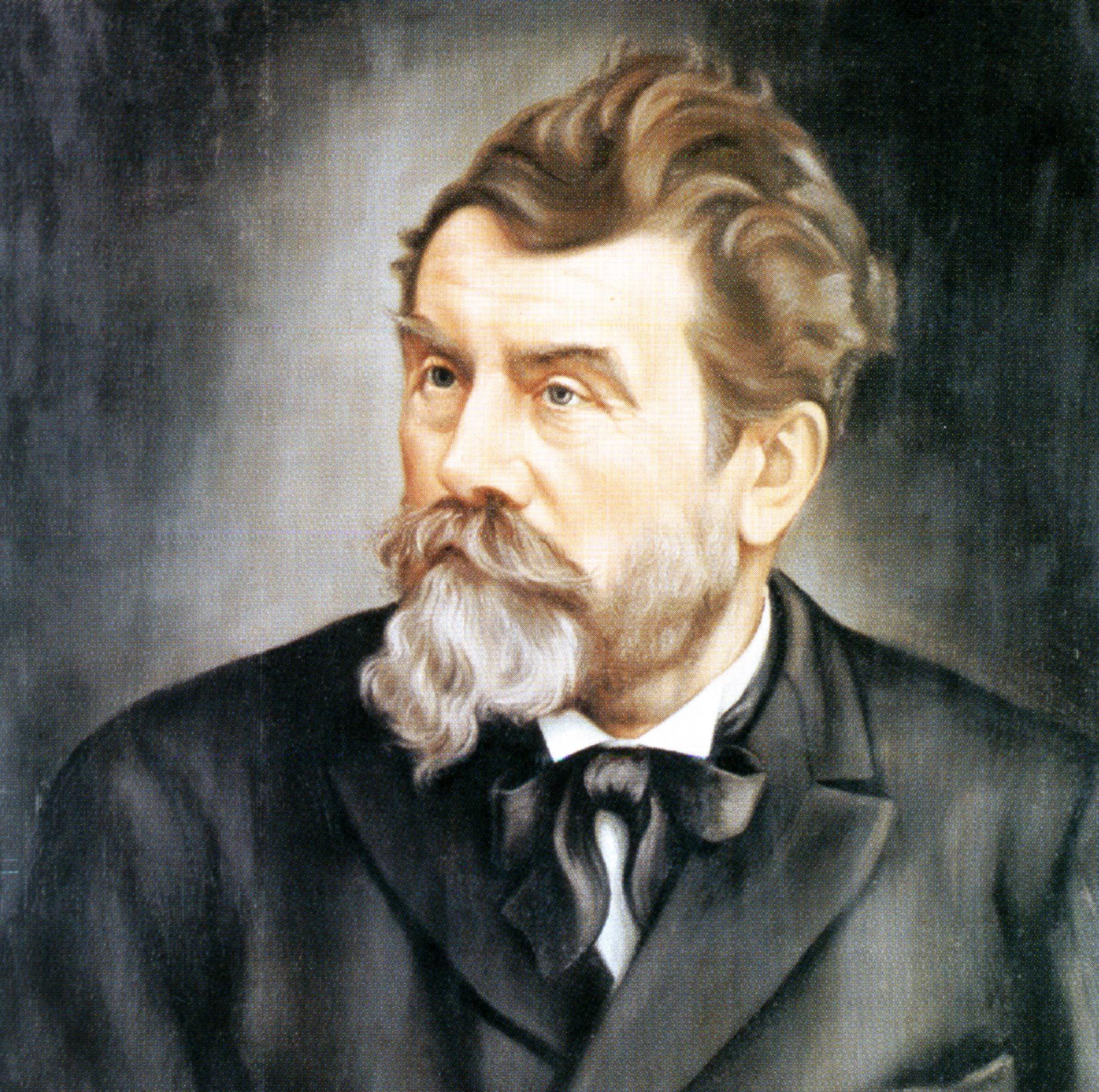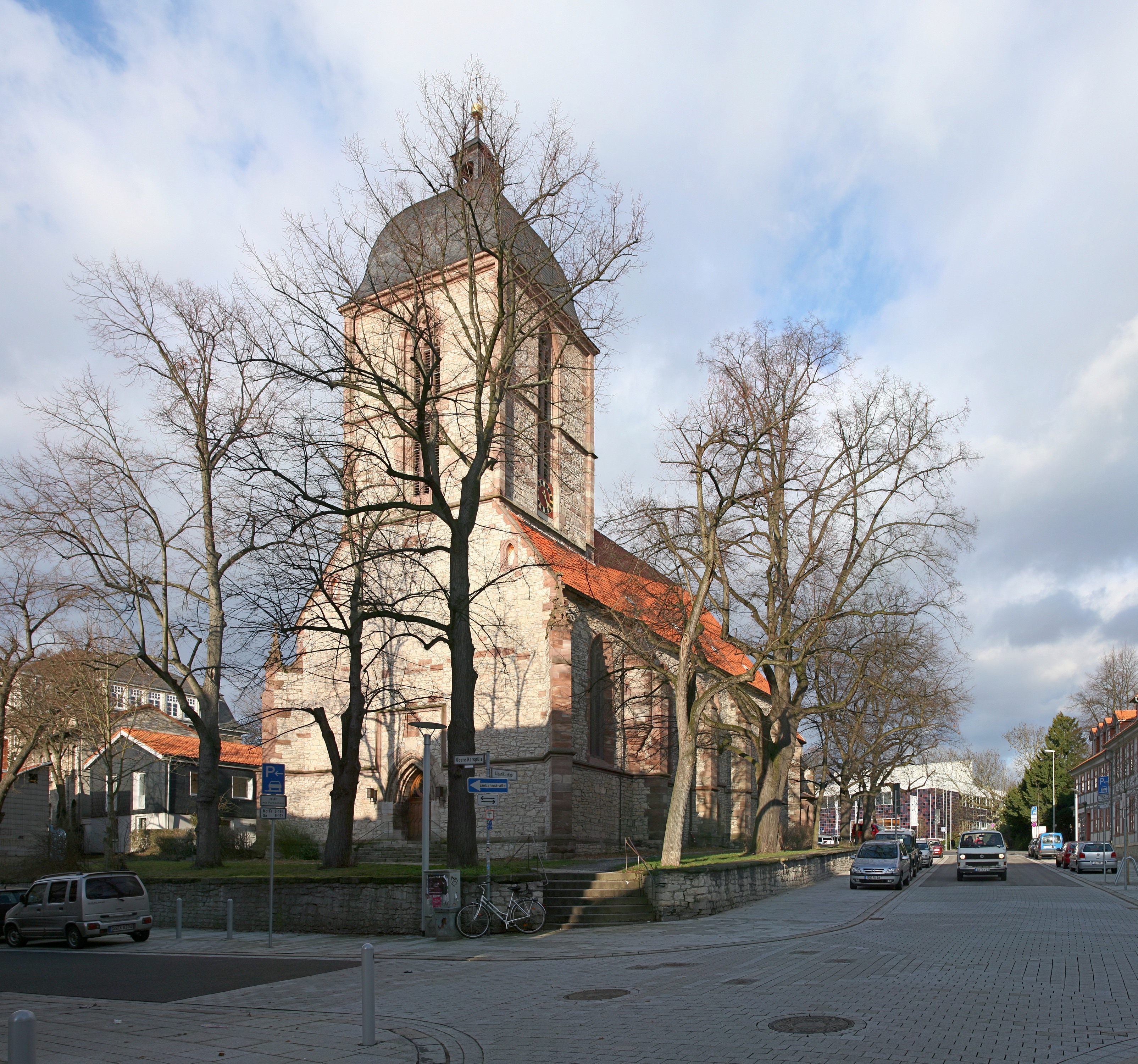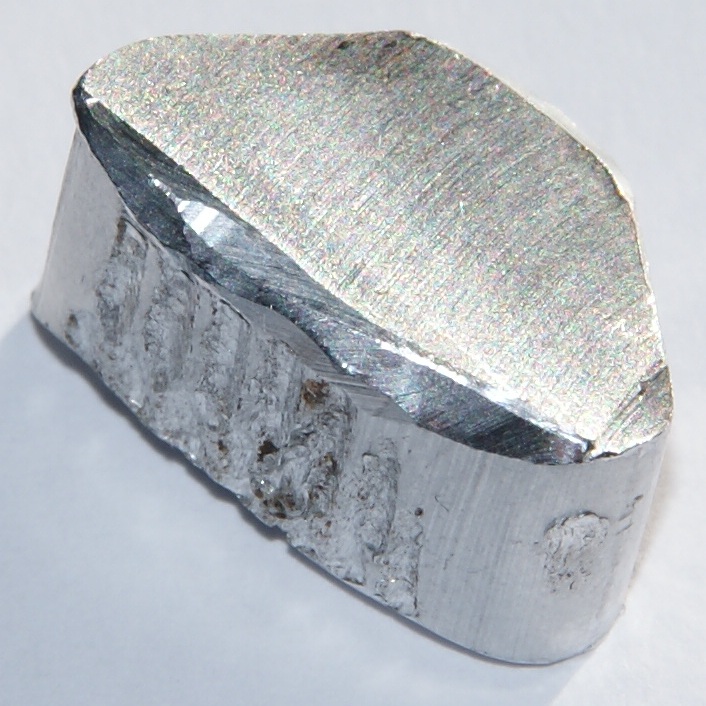|
Wilhelm Lambrecht
Wilhelm Lambrecht (3 August 1834, Wolbrechtshausen – 17 June 1904, Göttingen) was a German builder of measuring instruments. After doing his exams Lambrecht began a five-year apprenticeship as a mechanic in Einbeck. The handling of the measuring instruments which were, despite their heaviness, less robust and built quite complicated and bulky at this time, sparked Lambrecht’s interest in instrument building and revealed his special talent during his apprenticeship. In the following five years of his journeyman's travel he worked in well-known factories in Paris and Berlin, then went back to Einbeck and went into business for himself. In 1864 he went to Göttingen, opened a factory and soon met the chemist Friedrich Wöhler and the physician L. Weber. In 1867, when he came back from the world exhibition in Paris and brought the first chromic acid cell with him, he also met the astronomer Wilhelm Klinkerfues. Klinkerfues had developed a bifilar-hygrometer which was widely used ... [...More Info...] [...Related Items...] OR: [Wikipedia] [Google] [Baidu] |
Wolbrechtshausen
Wolbrechtshausen is a part of the municipality Nörten-Hardenberg in the district of Northeim in Lower Saxony. Geographical position Wolbrechtshausen is located on the western end of the Leine river valley between Solling and Harz. Through the village flows the river Espolde, a tributary of the Leine. Highest point of the location is the Höheberg with a height of 177,4 m over NN. Neighbouring villages are Hevensen, Lütgenrode and Parensen. History The first written reference of the village is from the year 1210 in a duplication of the 13th century and calls the location as ''Wolbreteshusen''. An older reference from the 12th century often confuses the village with the deserted site ''Wolbechteshusen'' near Gillersheim. In 1345 it is written that the house of Hardenberg owned a large manor in Wolbrechtshausen. Then in 1486 Wolbrechtshausen became a casualty of a great fire and nearly the whole village burned down. One century later in 1597 the pest raged there and so mu ... [...More Info...] [...Related Items...] OR: [Wikipedia] [Google] [Baidu] |
Göttingen
Göttingen (, ; ; ) is a college town, university city in Lower Saxony, central Germany, the Capital (political), capital of Göttingen (district), the eponymous district. The River Leine runs through it. According to the 2022 German census, the population of Göttingen was 124,548. Overview The origins of Göttingen lay in a village called ''Gutingi, ''first mentioned in a document in 953 AD. The city was founded northwest of this village, between 1150 and 1200 AD, and adopted its name. In Middle Ages, medieval times the city was a member of the Hanseatic League and hence a wealthy town. Today, Göttingen is famous for its old university (''Georgia Augusta'', or University of Göttingen, "Georg-August-Universität"), which was founded in 1734 (first classes in 1737) and became the most visited university of Europe. In 1837, seven professors protested against the absolute sovereignty of the House of Hanover, kings of Kingdom of Hanover, Hanover; they lost their positions, but ... [...More Info...] [...Related Items...] OR: [Wikipedia] [Google] [Baidu] |
Einbeck
Einbeck (; Eastphalian: ''Aimbeck'') is a town in the district Northeim, in southern Lower Saxony, Germany, on the German Timber-Frame Road. History Prehistory The area of the current city of Einbeck is inhabited since prehistoric times. Various artifacts have been unearthed in the city of Einbeck itself and in the little villages and lost villages around it over the years. They date back to the Paleolithic Era. Medieval period In the Early Middle Ages a number of villages existed along the river Ilme in the middle Leine valley before Einbeck was founded. On January 1, 1158 Einbeck was first mentioned in a deed of Friedrich Barbarossa, which mentioned ''… in loco qui Einbike vocatur …''. and related to a transfer of an estate in the 11th century. Count Udo of Katlenburg owned an estate on the bank of a brook, the Krummes Wasser (crooked water). His grandson founded the stift Sankt Alexandri, that subsequently developed into an important sanctuary. On the other side of t ... [...More Info...] [...Related Items...] OR: [Wikipedia] [Google] [Baidu] |
Friedrich Wöhler
Friedrich Wöhler Royal Society of London, FRS(For) HonFRSE (; 31 July 180023 September 1882) was a German chemist known for his work in both organic chemistry, organic and inorganic chemistry, being the first to isolate the chemical elements beryllium and yttrium in pure metallic form. He was the first to prepare several inorganic compounds, including silane and silicon nitride. Wöhler is also known for seminal contributions in organic chemistry, in particular, the Wöhler synthesis of urea. His synthesis of the organic compound urea in the laboratory from inorganic substances contradicted the belief that organic compounds could only be produced by living organisms due to a "life force". However, the exact extent of Wöhler's role in diminishing the belief in vitalism is considered by some to be questionable. Biography Friedrich Wöhler was born in Eschersheim, Germany, and was the son of a veterinarian. As a boy, he showed interest in mineral collecting, drawing, and science. ... [...More Info...] [...Related Items...] OR: [Wikipedia] [Google] [Baidu] |
Chromic Acid Cell
The chromic acid cell is a type of primary cell which uses chromic acid as a depolarizer. The chromic acid is usually made by acidifying (with sulfuric acid) a solution of potassium dichromate. The old name for potassium dichromate is potassium bichromate and the cell is often called a bichromate cell. This type of cell is now only of historical interest. History Construction The main elements of the cell are: * Anode, zinc * Electrolyte, dilute sulfuric acid * Depolarizer, chromic acid * Cathode, carbon The cell is made in two forms - the single-fluid type, attributed to Poggendorff and the two-fluid type, attributed to Fuller. In both cases, cell voltage is about 2 volts. Poggendorff cell The cell is set up in a long-necked glass bottle with a zinc plate located between two carbon plates. The electrolyte and depolarizer are then mixed. The mixture would dissolve the zinc plate even when the cell is not in use, so there is a mechanism for lifting the zinc plate ... [...More Info...] [...Related Items...] OR: [Wikipedia] [Google] [Baidu] |
Ernst Friedrich Wilhelm Klinkerfues
Ernst Friedrich Wilhelm Klinkerfues (29 March 1827 in Hofgeismar – 28 January 1884 in Göttingen) was a German astronomer and meteorologist. He discovered six comets and published weather reports of varying accuracy based on his meteorological measurements. Early life Klinkerfues was born in Hofgeismar, the son of army doctor Johann Reinhard Klinkerfues and his wife Sabine (née Dedolph). After the early death of his parents, he was brought up by relatives, and after attending high school qualified as a surveyor in Kassel. In this capacity he subsequently worked on the new Frankfurt - Kassel railway. From 1847 to 1851 Klinkerfues studied mathematics and astronomy at the University of Marburg. He then became an assistant to Carl Friedrich Gauss at Göttingen Observatory, where he completed his Ph.D. with a thesis on orbit calculations of double stars. After Gauss's death in 1855, the mathematician W. E. Weber replaced him as director, but Klinkerfues was to be temporarily resp ... [...More Info...] [...Related Items...] OR: [Wikipedia] [Google] [Baidu] |
Hygrometer
A hair tension dial hygrometer with a nonlinear scale. A hygrometer is an instrument that measures humidity: that is, how much water vapor is present. Humidity measurement instruments usually rely on measurements of some other quantities, such as temperature, pressure, mass, and mechanical or electrical changes in a substance as moisture is absorbed. By calibration and calculation, these measured quantities can be used to indicate the humidity. Modern electronic devices use the temperature of condensation (called the dew point), or they sense changes in electrical capacitance or resistance. The maximum amount of water vapor that can be present in a given volume (at saturation) varies greatly with temperature; at low temperatures a lower mass of water per unit volume can remain as vapor than at high temperatures. Thus a change in the temperature changes the relative humidity. A prototype hygrometer was invented by Leonardo da Vinci in 1480. Major improvements occurred during ... [...More Info...] [...Related Items...] OR: [Wikipedia] [Google] [Baidu] |
Dew Point
The dew point is the temperature the air needs to be cooled to (at constant pressure) in order to produce a relative humidity of 100%. This temperature depends on the pressure and water content of the air. When the air at a temperature above the dewpoint is cooled, its moisture capacity is reduced and airborne water vapor will Condensation, condense to form liquid water known as dew. When this occurs through the air's contact with a colder surface, dew will form on that surface. The dew point is affected by the air's humidity. The more moisture the air contains, the higher its dew point. When the temperature is below the freezing point of water, the dew point is called the frost point, as frost is formed via deposition (phase transition), deposition rather than condensation. In liquids, the analog to the dew point is the cloud point. Humidity If all the other factors influencing humidity remain constant, at ground level the relative humidity rises as the temperature falls; this ... [...More Info...] [...Related Items...] OR: [Wikipedia] [Google] [Baidu] |
Psychrometer
image:Haar-Hygrometer.jpg, A hair tension dial hygrometer with a nonlinear scale. A hygrometer is an instrument that measures humidity: that is, how much water vapor is present. Humidity measurement instruments usually rely on measurements of some other quantities, such as temperature, pressure, mass, and mechanical or electrical changes in a substance as moisture is absorbed. By calibration and calculation, these measured quantities can be used to indicate the humidity. Modern electronic devices use the temperature of condensation (called the dew point), or they sense changes in electrical capacitance or Electrical resistance, resistance. The maximum amount of water vapor that can be present in a given volume (at Relative humidity, saturation) varies greatly with temperature; at low temperatures a lower mass of water per unit volume can remain as vapor than at high temperatures. Thus a change in the temperature changes the relative humidity. A prototype hygrometer was invented b ... [...More Info...] [...Related Items...] OR: [Wikipedia] [Google] [Baidu] |
World War I
World War I or the First World War (28 July 1914 – 11 November 1918), also known as the Great War, was a World war, global conflict between two coalitions: the Allies of World War I, Allies (or Entente) and the Central Powers. Fighting took place mainly in European theatre of World War I, Europe and the Middle Eastern theatre of World War I, Middle East, as well as in parts of African theatre of World War I, Africa and the Asian and Pacific theatre of World War I, Asia-Pacific, and in Europe was characterised by trench warfare; the widespread use of Artillery of World War I, artillery, machine guns, and Chemical weapons in World War I, chemical weapons (gas); and the introductions of Tanks in World War I, tanks and Aviation in World War I, aircraft. World War I was one of the List of wars by death toll, deadliest conflicts in history, resulting in an estimated World War I casualties, 10 million military dead and more than 20 million wounded, plus some 10 million civilian de ... [...More Info...] [...Related Items...] OR: [Wikipedia] [Google] [Baidu] |
1834 Births
Events January–March * January 1 – Zollverein (Germany): Customs charges are abolished at borders within its member states. * January 3 – The government of Mexico imprisons Stephen F. Austin in Mexico City. * January – The Wilmington and Raleigh Railroad is chartered in Wilmington, North Carolina. * February 3 – Wake Forest University is founded as the Wake Forest Manual Labor Institute in Wake Forest, North Carolina. * February 12 – Freed American slaves from Maryland form a settlement in Cape Palmas, it is named the Republic of Maryland. * February 13 – Robert Owen organizes the Grand National Consolidated Trades Union in the United Kingdom. * March 6 – York, Upper Canada, is incorporated as Toronto. * March 11 – The United States Survey of the Coast is transferred to the Department of the Navy. * March 14 – John Herschel discovers the open cluster of stars now known as NGC 3603, observing from the Cape of Good Hope. * March 28 – Andrew J ... [...More Info...] [...Related Items...] OR: [Wikipedia] [Google] [Baidu] |





